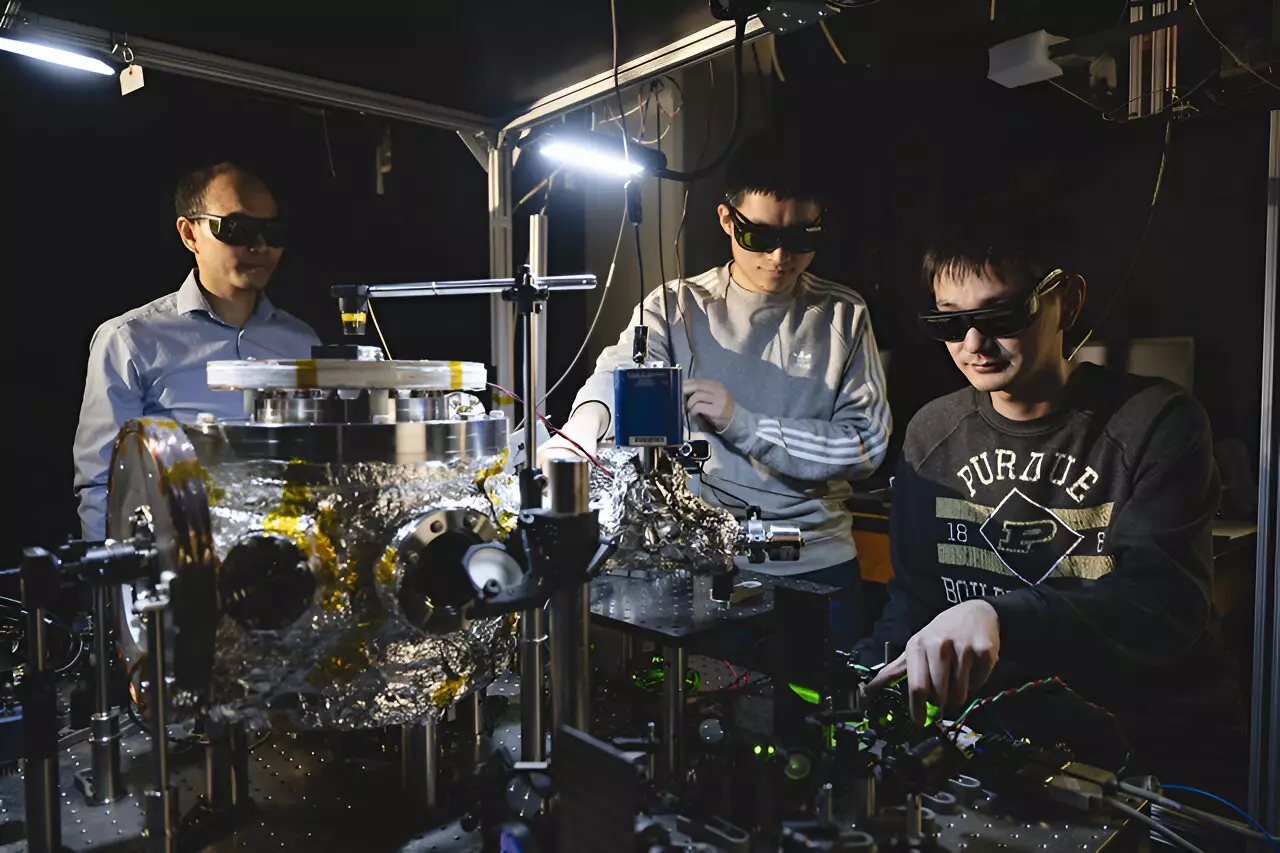In a groundbreaking experiment at Purdue University, physicists have taken a bold leap into the realm of quantum mechanics by conducting what is being termed the world’s smallest disco party. The focal point of this innovative research is a minute fluorescent nanodiamond, which has been levitated and set in motion at astonishing velocities. Not just a spectacle of lights, this study opens up new avenues to explore the intricate dance between rotation, quantum states, and the enigmatic nature of gravity.
The research team, spearheaded by Professor Tongcang Li from the Physics and Astronomy department, presents a fusion of technical prowess and scientific inquiry that has drawn attention within the scientific community. The results of their investigation were published in the esteemed journal Nature Communications, where reviewers hailed the work as a “groundbreaking moment for the study of rotating quantum systems” and a significant advance within the field of levitodynamics.
At the heart of the experiment lies a sophisticated setup that levitated a nanodiamond by utilizing a specialized ion trap in a high-vacuum environment. This setup not only supported the levitation but also enabled the manipulation of spin qubits embedded within the diamond structure. Spin qubits are the tiny building blocks of quantum information, and their stability and accessibility have historically presented challenges in experimental physics. As Professor Li noted, previous attempts to manage floating diamonds often resulted in complications, particularly in maintaining their viability in a vacuum. Yet, this innovative approach has allowed for unprecedented levels of control.
The nanodiamonds, approximately 750 nanometers in diameter, were synthesized through high-pressure and high-temperature methods, and then treated with energetic electrons to create color centers that host electron spin qubits. When illuminated by a green laser, these diamonds emitted distinct red light, enabling researchers to evaluate the states of the spins inside. An additional infrared laser was directed at the rotating diamond to extract crucial information regarding its spin orientation, reminiscent of a disco ball casting multicolored lights into an array of dancing reflections.
One of the more intricate findings from this research relates to a phenomenon known as the Berry phase. By spinning the fluorescent nanodiamond at dizzying speeds—up to 1.2 billion rotations per minute—scientists could observe how this rapid rotation affected the spin qubits in a manner revealing the Berry phase. This mathematical construct is significant in quantum mechanics, symbolizing a geometrical phase acquired over the course of adiabatic processes in quantum systems.
Understanding the Berry phase gives physicists a deeper insight into the nature of quantum phenomena and how they relate to gravitational effects. As Professor Li summarized, these discoveries not only enhance our understanding of quantum physics but may also bridge some of the gaps that have long existed between quantum mechanics and gravity, highlighted as two foundational yet fundamentally incompatible theories in physics.
The potentials of this research extend far beyond the confines of academic curiosity. Levitated nanodiamonds, with their ability to host spin qubits in a high vacuum, represent an intriguing platform for precision measurements and novel quantum applications. As researchers continue to push the boundaries of what is possible, Li envisions a future where these tools may be essential for experimental studies into quantum gravity—an area of research that remains largely theoretical and unexplored.
Furthermore, the possible industrial implications of this technology are vast. For instance, optically levitated nanoparticles could be leveraged as cutting-edge sensors, providing enhanced capabilities for navigation and communication technologies. The U.S. Air Force Research Laboratory is already investigating such technologies to address critical operational challenges.
Integral to this project has been a collaborative effort among graduate students, postdoctoral researchers, and other technical staff. Their ability to conceptualize, refine, and fabricate the ion trap setup is a testament to the spirit of scientific inquiry and teamwork. Advanced simulations with tools like COMSOL Multiphysics allowed them to optimize their design effectively, and the methodology employed in the fabrication processes underlines the importance of interdisciplinary collaboration in modern scientific breakthroughs.
The development of this levitated nanodiamond and its correlated research exemplifies a significant progress in the field of quantum mechanics and optomechanics. This pioneering work at Purdue is not merely a display of scientific novelty but carries with it the promise of revealing deeper truths about the universe while hinting at practical applications that could reshape technology as we know it. The journey of quantum exploration continues, and with it, the potential for transformative discoveries awaits.


Leave a Reply